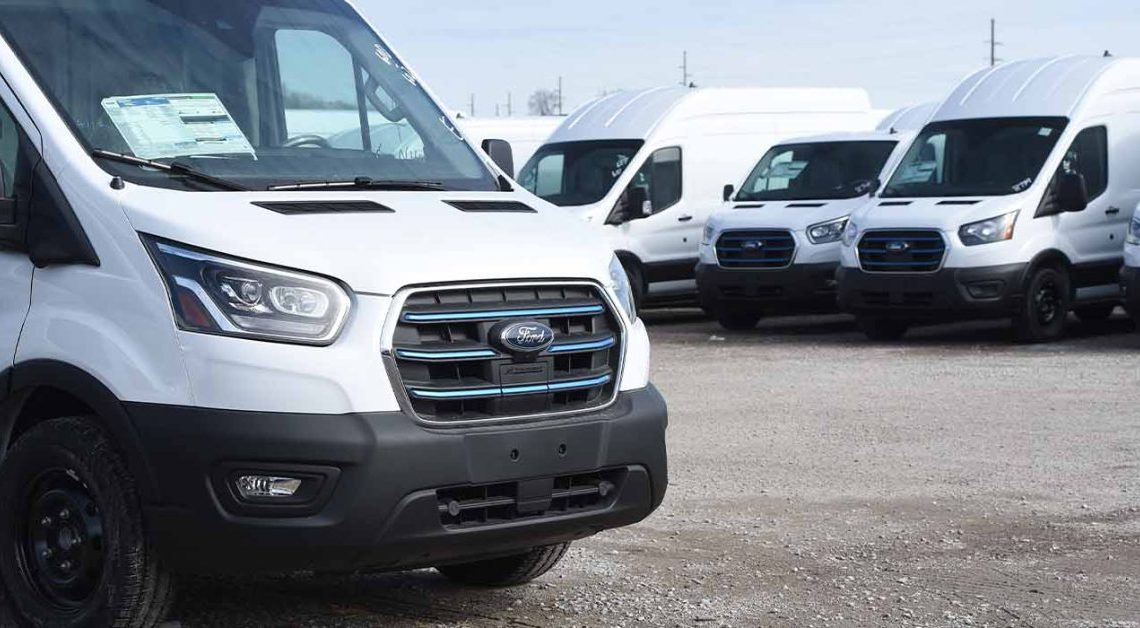
Ford is updating the E-Transit with a larger 89kWh battery, increasing range by roughly 30% depending on configuration, and faster charging on both DC and AC.
The battery increases from 67 to 89kWh, a substantial increase. The update means that the low-roof version of the E-Transit will have a range of 159 miles, up from 126 miles previously, a 26% improvement.
Ford didn’t share range numbers for the medium- and high-roof versions, but did say that the high-roof version gains 32% range from the previous model. Given the previous model’s range of 108 miles, that means the new one should have a range of 143 miles or thereabouts.
The E-Transit also gets improved DC charging performance, with 176kW charging capability, up from 115kW. When connected to a suitably-quick charger, this means a 2024 E-Transit (low roof model) can get 67 miles of range in 15 minutes, an improvement of 49% over the previous model. And any new E-Transits will have access to Ford’s new NACS adapter which just came out last week, though they still have the old CCS port on the vehicle itself for now.
But it’s not just DC charging that’s improved, but AC charging as well. The new dual onboard charger improves AC charge speeds by 22%, meaning a van will be able to charge from zero to full in 6 hours and 11 minutes on an 80 amp charger (suggesting a ~14.3kW charge rate). Better AC charging is important because a lot of these vans will be charged overnight at a business’s property, or even at workers’ homes.
That said, 80-amp charging is rare to find at homes. So for home charging, Ford is announcing a new 48 amp charging unit with replaceable cables and cellular connectivity. This unit will be available for order mid-this-year.
Prices start at $51,095 before destination fees, which is $1,100 more than last year’s base price. The E-Transit qualifies for the federal EV tax credit, which helps shave $7,500 off the price, and can likely qualify for other green incentives in various regions as well.
Electrek’s Take
Last year, Ford gave us an exclusive that the E-Transit would get a 186-mile battery, to be announced last May. That date came and went with no announcement, and when we followed up later, Ford said they had no news to tell us on that front. So, it’s disappointing that that didn’t materialize.
But now that we’ve actually seen the stats on the improved E-Transit, these are nice changes. Rather than having one small and one large battery option, the whole model range got improved electric range and charging, without much additional cost. That’s a rare thing, to see such a big upgrade of what is already the best-selling commercial EV, and with little additional cost. It’s much cheaper than Mercedes’ eSprinter, for example.
It would be nice to still have smaller battery availability for those customers who don’t need the extra range, though. Some companies might have shorter routes or smaller coverage areas, and would prefer lower costs. Having an even cheaper model available could be great for those customers. But regardless, the current price and operational costs of the E-Transit are attractive either way, so if Ford wants to give customers better stuff for free, we’ll gladly take it.
Author: Jameson Dow
Source: Electrek



